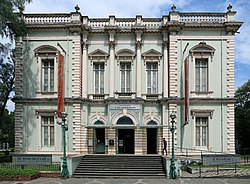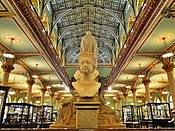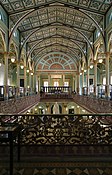
Jijamata Udyaan, also known as the Byculla Zoo and formerly Victoria Gardens, is a zoo and garden covering 50 acres located at Byculla, in the heart of Mumbai, India. It is the oldest public garden in Mumbai. After Indian independence, it was named after Jijamata, the mother of Shivaji, the first Maratha emperor.
Byculla is an area of South Mumbai.

Kala Ghoda is a crescent-shaped art district/neighborhood in Mumbai, India. It hosts several of the city's heritage buildings including museums, art galleries and educational institutions like the Chhatrapati Shivaji Maharaj Vastu Sangrahalaya, the Jehangir Art Gallery, the National Gallery of Modern Art, and The Arts Trust - Institute of Contemporary Indian Art.
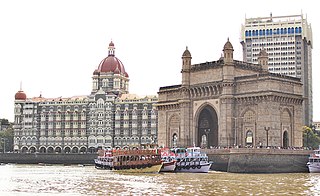
A resident of Mumbai is called a Mumbaikar. People prefer to stay close to a railway station for easy access to the metropolis. Many city-dwellers lead a fast-paced life with very little time for other activities owing to a significant amount of time spent on daily commuting.
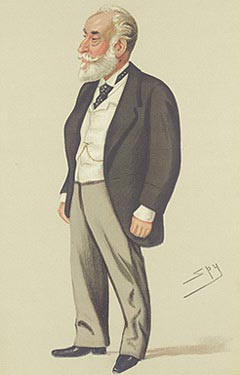
Sir Albert Abdullah David Sassoon, 1st Baronet, was a Baghdad-born businessman and philanthropist.
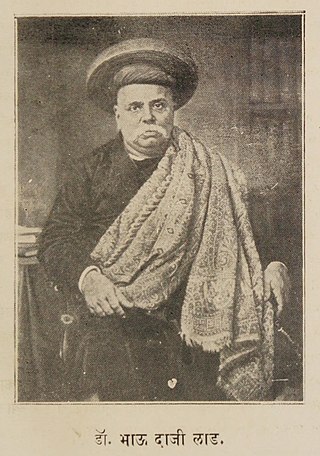
Ramachandra Vitthal Lad (1824–1874), commonly known as Bhau Daji Lad was an Indian physician, Sanskrit scholar, and an antiquarian.
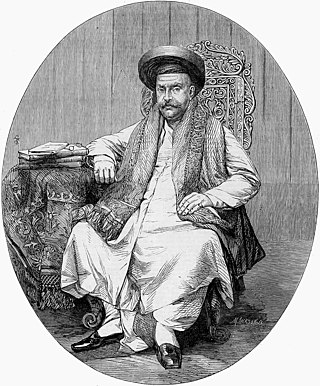
Jagannath ShankarshethMurkute popularly known as Nana Shankarsheth was an Indian Philanthropist and educationalist. He was born in the wealthy Murkute family in Murbad,Thane. So high was his credit that Arabs, Afghans and other foreign merchants chose to place their treasures in his custody rather than with banks. He soon acquired a large fortune, much of which he donated to the public. He was one of few founding members of the Great Indian Peninsula Railway along with Sir Jamsetjee Jejeebhoy and David Sasson.
Reena Saini Kallat is an Indian visual artist. She currently lives and works in Mumbai.

Balasaheb Gangadhar Kher was an Indian politician who served as the prime minister of Bombay and the first chief minister of Bombay State (1947–1952). He was awarded the Padma Vibhushan by the Government of India in 1954. A lawyer, solicitor and social worker by choice and politician by necessity, Kher was often described as "Sajjan", good and gentle. Kher was a scholar, an accomplished orator, and a man with no pretensions.
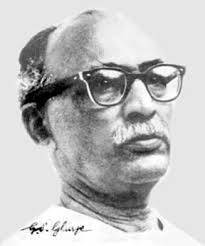
Govind Sadashiv Ghurye was a pioneering Indian academic who was a professor of sociology. In 1924, he became the second person to head the Department of Sociology at the University of Bombay. And, is widely regarded as the founder of Indian Sociology & Sociology in India.
Gayatri Sinha is an art critic and curator based in New Delhi, India. Her primary areas of research are around the structures of gender and iconography, media, economics and social history. She founded Critical Collective, a forum for thinking about conceptual frames within art history and practice in contemporary India.

Pralhad Anant Dhond (1908–2001) was an Indian painter and art educator.
Valay Shende is a sculptor and artist. In 1999 he received his diploma in Art Teaching from Govt. Chitrakala Mahavidyalaya, Nagpur, and then he went on to train at the Sir Jamsetjee Jeejebhoy School of Art, Mumbai, from which he graduated with a Bachelor of Fine Arts in sculpturing in 2004. Shende later completed an artist residency at the Open 'Air' Program, Point Éphémère, Paris in 2006.His latest exhibition, Migrating Histories of Molecular Identities, shows artwork that represent situations through "the deconstruction of matter in the form of molecular discs of metal and portraits". His work has been exhibited in Mumbai at the Dr. Bhau Daji Lad Museum, and various other cities. Shende's work has been featured in The Daily Telegraph.
Daji Bhatawadekar, was an Indian theatre personality and film and television actor. He was credited with the revival of Sanskrit and Marathi theatre in India. A winner of the Sangeet Natak Akademi award in 1965, he was honoured by the Government of India in 1967, with the award of Padma Shri, the fourth highest Indian civilian award for his contributions to the society.

Thukral and Tagra are an artist duo composed of Jiten Thukral and Sumir Tagra. They work with a wide range of media including painting, sculpture, installations, interactive games, video, performance and design.

Nalini Malani is an Indian artist, among the country's first generation of video artists.
Rohini Devasher is an Indian contemporary artist.
Vikas Dilawari is an Indian conservation architect who has restored at-risk monuments and heritage buildings in Mumbai, including the Victoria Terminus, Rajabai Clock Tower, Dr. Bhau Daji Lad Museum, Wellington Fountain and Christ Church, Byculla. 16 restoration projects carried out by his team have been recognised by the UNESCO Asia-Pacific Awards for Cultural Heritage Conservation, including the 2019 work on the Flora Fountain, which was designed by architect Richard Norman Shaw and completed in 1864.
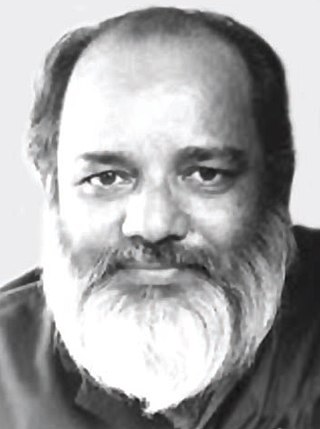
Baburao Sadwelkar was an Indian painter, art writer, educator and administrator. He is known for his portraits, landscape and abstract paintings in the Impressionistic style. As an art educator, he brought a modern outlook to art education at the Sir J. J. School of Art after learning about the American art education model under a Fulbright Scholarship in 1962–63. Sadwelkar was also passionate about the art tradition of Maharashtra and the art history of the Sir J. J. School of Art. From 1975 to 1986, he served as the Director of Art for Maharashtra State where the preservation and propagation of this artistic tradition prospered under his guidance. He wrote extensively about the art and artists from the state and which are considered as important art publications.
